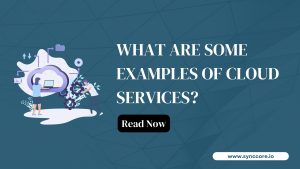In the era of digitization, email correspondence holds a crucial position in business functionalities. The extensive uptake of cloud-driven email services has granted enterprises enhanced flexibility and streamlined communication. Nevertheless, while reaping the benefits of these cloud-based email platforms, it’s imperative to tackle the security obstacles inherent in this communication mode. This article explores optimal strategies for fortifying cloud-based email systems and safeguarding vital business data by prioritizing confidentiality, integrity, and availability.
Securing cloud-based email systems in business communication demands a comprehensive approach encompassing various best practices to fortify data integrity and protect against cyber threats. These measures prioritize the confidentiality, accessibility, and reliability of email correspondence, ensuring a resilient defense against potential vulnerabilities and breaches.
Implementation of Multi-Factor Authentication (MFA): Enhancing email security starts with adopting multi-factor authentication, which adds an additional layer of protection by requiring users to provide multiple forms of identification. Even if login credentials are compromised, this step helps prevent unauthorized access.
Encryption for Data Protection: Encrypting email data during transmission (in transit) and when stored (at rest) is crucial for shielding sensitive information. Transport Layer Security (TLS) protocols ensure secure data transfer, while encryption mechanisms provided by the cloud email service render stored data unreadable to unauthorized parties.
Ongoing Security Audits and Monitoring: Regular security audits and continuous monitoring of email activities are proactive strategies to promptly detect and respond to potential threats. Monitoring for suspicious login attempts, unusual patterns, or unauthorized access can help identify security incidents at an early stage.
Employee Training and Awareness Programs: To mitigate risks associated with human error, comprehensive training on email security best practices is essential. Educating employees about recognizing phishing attempts, avoiding suspicious links or attachments, and reporting security concerns promptly can significantly reduce vulnerabilities.
Leveraging Email Filtering and Anti-Phishing Solutions: Advanced email filtering and anti-phishing solutions aid in automatically detecting and filtering out malicious content. These tools can identify phishing attempts, malware, and spam, reducing the risk of employees falling victim to social engineering attacks.
Implementation of Access Control and Permissions: Implementing stringent access controls and permissions restricts user access to sensitive data. Granting access on a need-to-know basis and regularly reviewing and updating permissions based on employee roles ensures that critical data is accessed only by authorized personnel.
Regular Software Updates and Patch Management: Maintaining up-to-date email systems and security software is essential to address vulnerabilities and bolster overall security. Consistently applying patches and updates provided by the cloud email service provider helps protect against known threats and exploits.
Development of Data Backup and Recovery Plans: Establishing robust data backup and recovery plans is crucial in the face of data loss or security incidents. Regularly backing up critical email data to secure cloud storage ensures a swift recovery process in scenarios like accidental deletion, cyber-attacks, or system failures.
Utilization of Cloud Service Provider Security Features: Leveraging the built-in security features offered by reputable cloud service providers is advantageous. These features often include threat intelligence, advanced threat protection, and anomaly detection, which can be configured to align with an organization’s specific security requirements.
Compliance with Regulatory Standards: Adhering to industry-specific and regulatory standards, such as GDPR, HIPAA, or others pertinent to your sector, is imperative. Compliance ensures trust, meets legal obligations, and enhances the overall security posture of cloud-based email systems.
In conclusion, securing cloud-based email for business communication necessitates a proactive, multi-faceted approach. By incorporating these recommended practices, organizations fortify their defense mechanisms against evolving cyber threats, safeguarding sensitive information and preserving the integrity of communication channels.



